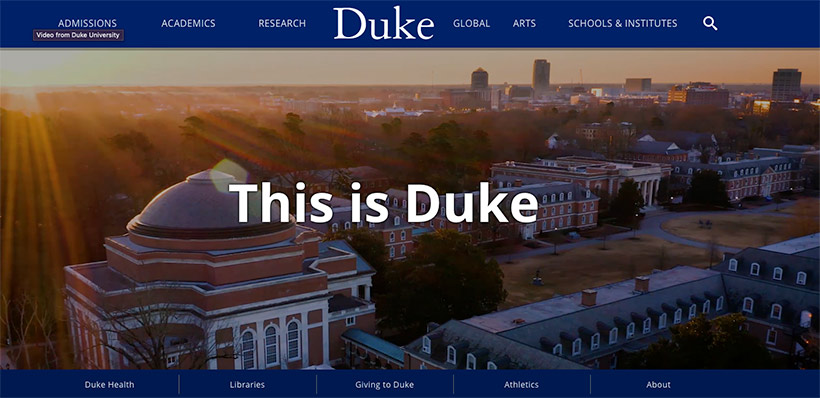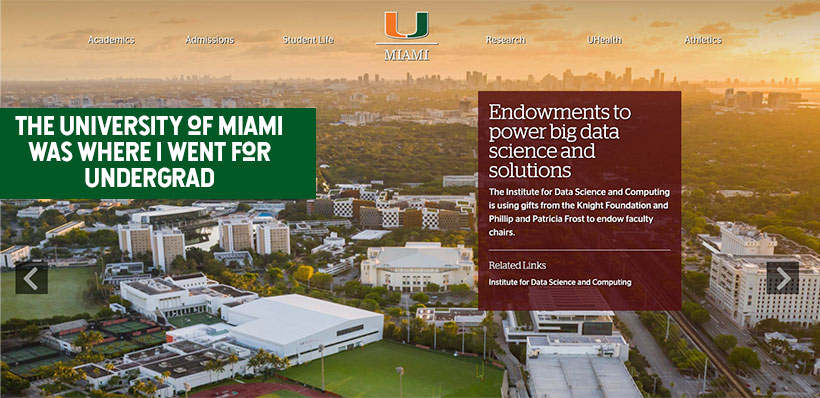Designing a University Website: 9 Must-Haves
Technology has transformed education in many ways. Universities and other learning institutions have realized the need to have a functional website. Such websites provide essential information to parents, students, and other education industry stakeholders. They need to have a few key elements to guarantee high conversion rates. Here are the must-have attributes for modern university websites.

Seamless Navigation
Every university needs to have a website that allows easy navigation. Going from one page to another should not take longer than necessary. Web pages that take longer than three seconds to load usually experience a higher bounce rate. Also, sites that group content according to the visitor profiles simplify the navigation process. For instance, content can fall into various categories based on either content, audience, and utility.
Mobile Responsiveness
Mobile phones are the most popular and convenient devices when people need to find information. According to statistics, the number of smartphone users today surpasses the 3 billion mark. The current generation of students is practically glued to mobile screens. That’s why every learning institution should emphasize building a website that responds across a wide selection of mobile devices. It is easier to rank higher on search engines with a mobile-friendly website and experience increased enrollment rates.
Quality, Authentic Images
High-quality, authentic images are an added advantage to a university’s website. Pictures tell many stories, and you do not want to leave your story in the fate of stolen or photoshopped images. People are looking for a real experience and will likely shun an institution that uses fake photos. It is also essential to capture the institution’s diversity in student photos. In turn, you can attract all students’ groups. Also, happy faces create a sense of fulfillment, and aspiring students appreciate an institution that can guarantee happiness.

Valuable Content
Ensuring that a university’s website provides timely and valuable content is crucial. It sets a website apart and increases traffic. Good and valuable content also increases user satisfaction rates, i.e., your students’ satisfaction. Whether you are looking for an online discussion tool or need a good, write my term paper cheap service, you are likely to settle for a site with top-quality content. Creating such content takes time but is a cost-effective means to drive conversions. In any case, institutions can hire professional content creators to provide consistent and user-driven content.
Make Programs and Majors Visible
When users visit a university’s website, they are very likely interested in the type of programs and majors available. Making this information easy to find is important. Similar to slow loading websites, potential students might get frustrated looking for too long for the information they need and leave your page without completing their search. Having essential information on display guarantees a better user experience and higher enrollment rates.
Share Information on Job Placement
Many students enroll in courses hoping to land employment opportunities after graduating. University education is expensive, and people shudder at the thought of spending huge sums of money on their studies only to end up jobless. One way to inspire students is to provide an alumni page and introduce former students who found success after graduating. Such connections are essential for mentorship purposes. Besides, they open up the student’s mind to look at different possibilities after school.
Admissions Requirements
Ensuring information on admission requirements is available on the website is paramount. College requirements can be overwhelming and extensive. There is a high likelihood that visitors on the site are aware of the available courses. They might only need information on admission requirements. This includes everything from qualifying grades, standardized tests, fee structures, and information on financial assistance or scholarships. Providing a requirements checklist can ensure that applicants have a seamless application process. Remember to highlight deadlines to prevent applicants from missing out on admission.
Strategically Located Search Box
A university’s website contains a multitude of information and resources. Despite creating a user-friendly website, it is impossible to capture all information at a glance. Some visitors need specific information which may not be available on the home page. Most website users expect to find the search bar at either of the webpage’s top corners. Wherever you decide to place your search box matters and will determine how users access important information.

Location and Contacts
Some parents and students might want to visit the institution before applying. Providing an accurate location and contact details will facilitate travel and communication. Maps are a helpful resource for anyone who wishes to find the institution. It is important to ensure your website is location-aware to get the best out of digital maps. This way, anyone using a smartphone can find the institution without much difficulty.
As technology continues transforming education, there is no limit to the possibilities opening up. Having a user-friendly website is no longer an option. It is a necessity for any university keen on experiencing an increase in enrollment and keeping their students happy.
































































































